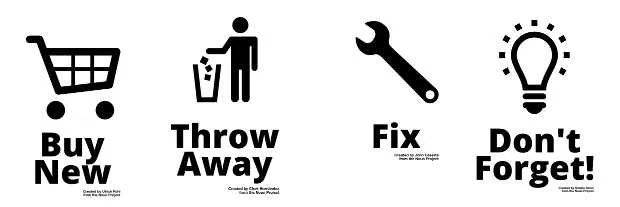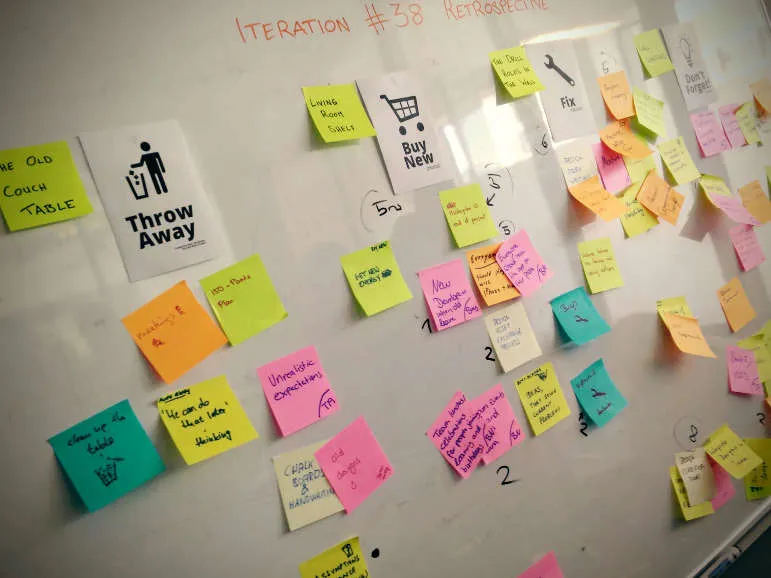
Moving from one place to another is something unique. The pleasant side of it certainly is the refreshing change, the novelty of the new home. On top of that you get the chance to get rid of old stuff; baggage that’s been sitting around in your old home that you no longer need but never decided to throw out.
Then again moving is also tedious work. Moving means days and weeks full of disassembling and reassembling furniture, packing your stuff in boxes, getting everything from A to B. Along with that there’s this constant stream of stuff that needs to get done, stuff that you must not forget. Call the landlord, get a new internet connection for the new place, pay that preposterous amount of money for the real estate agent… All this has to happen at a certain point of time on top of all the work that you need to do anyway.
I recently moved to a new place so I experienced first hand what moving was all about. I had volunteered to facilitate the next Retro for our team. Since I was literally busy day and night I had struggled to find what I wanted to do for that Retrospective. When I arrived at the office at the morning of the Retro I had a short chat with our PO where she asked me how I was doing. I told her about how I was moving at the moment and complained about the huge amount of stuff that’s still left to do when it struck me: This is the perfect metaphor for today’s Retro!
Why ‘moving apartments’ is a perfect metaphor for your Retrospective
Moving apartments is a great analogy to set the scene in your Retro. You can be pretty sure that everyone in your team has moved at least once in their life (going to university, moving for a job). In turn everyone is familiar with the process, the work and the feelings that are involved.
The process of moving has certain characteristics that have shown to be great questions to ask during a retro. I have found the following four topics to be fitting questions for the current state of the project. Setting the scene by introducing the metaphor of moving helped the team to get into the perfect mindset for that.
Buy something new
As you move to a new place you figure out that you suddenly need new stuff. More space at your new home or a different room layout might call for some new piece of furniture that you have to acquire.
Buying something new usually feels good. You get something pretty or something useful that will make your new place stand out. Acquiring something for your project can have the same effect. It does not mean that you have to literally buy something (although it can if you find out that there’s something missing). Adopting a new process or trying out something new could also be things that fall under the category of “get something new”
Throw away the old stuff
For many, moving to a new place offers a unique opportunity to throw lots of stuff away that you’ve always wanted to get rid of. Stuff that’s just been sitting around because you never got to throw it away. You got used to it but thinking about it there was no real use for it.
Your project will be full of something similar. Processes that serve no real purpose, technical debt in your code, everything that can generally be called waste if you want to talk in Lean terms. Everything that you are better off without but never bothered to get rid of can be identified with the help of this analogy.
Fix what’s broken
While you’re busy with disassembling and re-assembling all your furniture you often discover that there’s a lot of stuff that needs to be fixed. There are drill holes in your wall that should be sealed, walls that need to be painted, broken hinges that should be replaced.
With this analogy in mind you can identify the broken stuff in your project and discuss ways to fix it.
Don’t forget important things
When I was moving I always had a huge list of reminders that would pop up during the day to remind me of stuff I must not forget. Paying bills, calling people or quitting old contracts are just some of these. All these are things that need to be done by a certain point in time. They usually are little tasks but each of them is crucial and has to be done at a certain point.
Every project has similar things that don’t need to be done right now but need to be done before or after a certain point in time. This analogy helps you identifying the stuff that you absolutely must remember. You can then go on and discuss the right point in time where this item needs to be done.
Our experience

We had a really great session with our team using the “moving” metaphor. The team collected lots and lots of ideas that we could discuss about. I got great feedback on how the metaphor of moving really helped the team finding all these ideas. The four given questions offer analogies that everyone can relate to and they translate to project work really well.
Resources
As in my last Retrospective, I prepared some print-outs to better visualize the content of the Retro. I could also try to draw these but my drawing skills are pretty limited so I decided to go with printing them. Feel free to download the print-out if you want to try it for yourself. I’d love to hear from you if you’re trying this out!